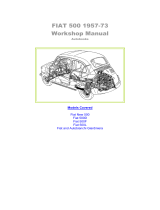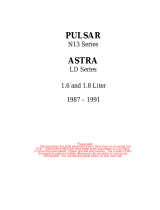
Friedrich Leutert GmbH & Co. KG 9
Engine Indicator S1 - Operating instructions
Indicator Spring
On the type S1, the indicator spring (2) is a bar spring which is clamped
at one end into the conical seat of the spring support (1) using an
unteachable threaded bush. The spherical point of the spring is seated
in a bore of the piston rod. The spring, accurately ground to size, is
deflected by the force of the piston, and this deflection is transferred to
the recording pencil at the multiplication of 8:1 by the lever system. At
a maximum recording height of 25 mm, the piston makes movement
of approx. 3 mm only. At the front of the threaded bush the size of the
spring is engraved according to the maximum pressure, referred to 1/1
piston. The spring to be used should be selected from the spring table
according to the existing maximum pressure. An appropriate scale is
supplied with each spring.
Should the maximum pressure be unknown, begin with the strongest
spring, selecting the proper one after measuring the pressure of the
indicator. In case too weak a spring is selected, it will not do any harm
to the indicator since the piston way is restricted by hitting against a
stop in the upper part, thus avoiding overloading the spring.
Practically the same thing happens when measuring an absolute pressure
of 1 bar abs. with a weak spring. Everything above 1,5 bar - using for
example a spring No. S1/1,5 bar and a piston 1/1 - is not recording
because the piston is limited by a stop. When inserting the spring, take
care that the guide pin (12) in the spring support (1) engages into the
groove of the spring cone and that the spherical point is inserted easily
into the hole of the piston rod. In order to achieve this, move the upper
part of the indicator to and from with the knurled handle, whilst the
other hand carefully screws-in the spring. Only once the point of the
spring is firmly seated in the hole of the piston rod, the screwed bush
should be firmly tightened by the special key in the box.
Indicator Drum
In view of the high speed this indicator is intended to be used on, the
drum of 30 mm dia. with the bar spring extending through the drilled
axle is designed with a minimum of mass without sacrifice in strength.
The return movement of the drums is effected by a built - in spring
(28), the tension of which may be adjusted as desired by turning drum
cover (35). After loosening the oil nut (30) and the drum nut (29) above
the drum cover, the drum can be drawn off its axle very easily. The
drum axle has an elastic drum stop and carries at its lower end, which
protrudes out of the spring support, the swiveling cord guide roll (52)
for the drum cord.













